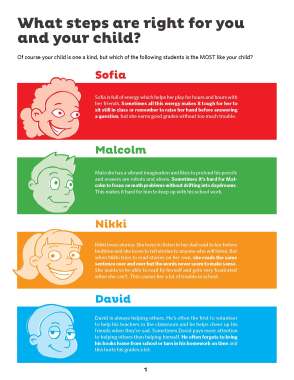 It is important to help families become advocates for their children. For children with behavioral conditions, this is even more important because children’s behaviors often can lead to stress and strain on peer relationships and functioning in school. However, there are terms or abbreviations that need to be explained in clear language so families can be prepared.
It is important to help families become advocates for their children. For children with behavioral conditions, this is even more important because children’s behaviors often can lead to stress and strain on peer relationships and functioning in school. However, there are terms or abbreviations that need to be explained in clear language so families can be prepared.
Parents often rely upon their child’s pediatrician when faced with stress around their child’s behavior. However, I have learned that many pediatricians often do not feel comfortable with coaching families about educational advocacy because it is not something that is taught during training. Aside from opportunities to learn what this is all about with individual families, this is by and large a skill that is missing and thus leaves many pediatric providers uncomfortable with these questions.
Helping families become comfortable engaging with the school and being involved in their child’s education increases the likelihood of the child’s educational success at any age. Some of the positive outcomes, regardless of the family background, include:
- Higher grades and test scores
- High quality work habits and task attendance
- Regular school attendance
- Better social skills and behavior
- Graduate and go on to post-secondary education
The first step is to ensure parents are viewed and feel like an equal partner at the table when working with schools. However, if parents have not had positive experiences with the school system either as a child or with their child, it makes it less likely that the parent will know where to start.
That is where pediatric providers come in and can help coach families on the importance of educational advocacy. As part of our ongoing work with ADHD group visits, one session is dedicated just to this topic because we have structured sessions to focus on the various treatment modalities for ADHD (Note: we work hard to make sure families understand that even though medications are often the first thing they think about when ADHD comes up, it is just one part of treatment. Positive parenting and educational support are equally as important!)
It also became clear that pediatric providers really crave tools to help explain the “alphabet soup” tied to understanding educational advocacy. So we engaged our patient advisory board and patient engagement core to help us translate these complex topics into something that can be used by the pediatric provider when talking with parents about interfacing with school.
We learned that parents want to hear about others’ stories about school experiences, even if it does not entirely relate to their own child. Stories are powerful ways to understand concepts or scenarios and that ‘first-hand’ experience is valuable to other parents. Moreover seeing different approaches can help families adapt to their own situation. As a result of this process, our design team came up with a “choose your own adventure.” Every aspect of this colorful brochure has been carefully thought out–right to the “pauses” rather than hard stops at each part of the story.
During our studies using this in our ADHD group visits, these tools were welcomed by parents and providers since it helped simplify the conversation and served as a nice road map for helping both parties to talk about the process.
Download a copy of the English version here.*
Download a copy of the Spanish version here.*
*Special thank you to our patient advisory board and Dr. Sarah Wiehe, Dustin Lynch, Courtney Moore (IU Patient Engagement Core) & to Helen Sanematsu.
As always, please share your experiences using these tools, whether as a parent or provider.